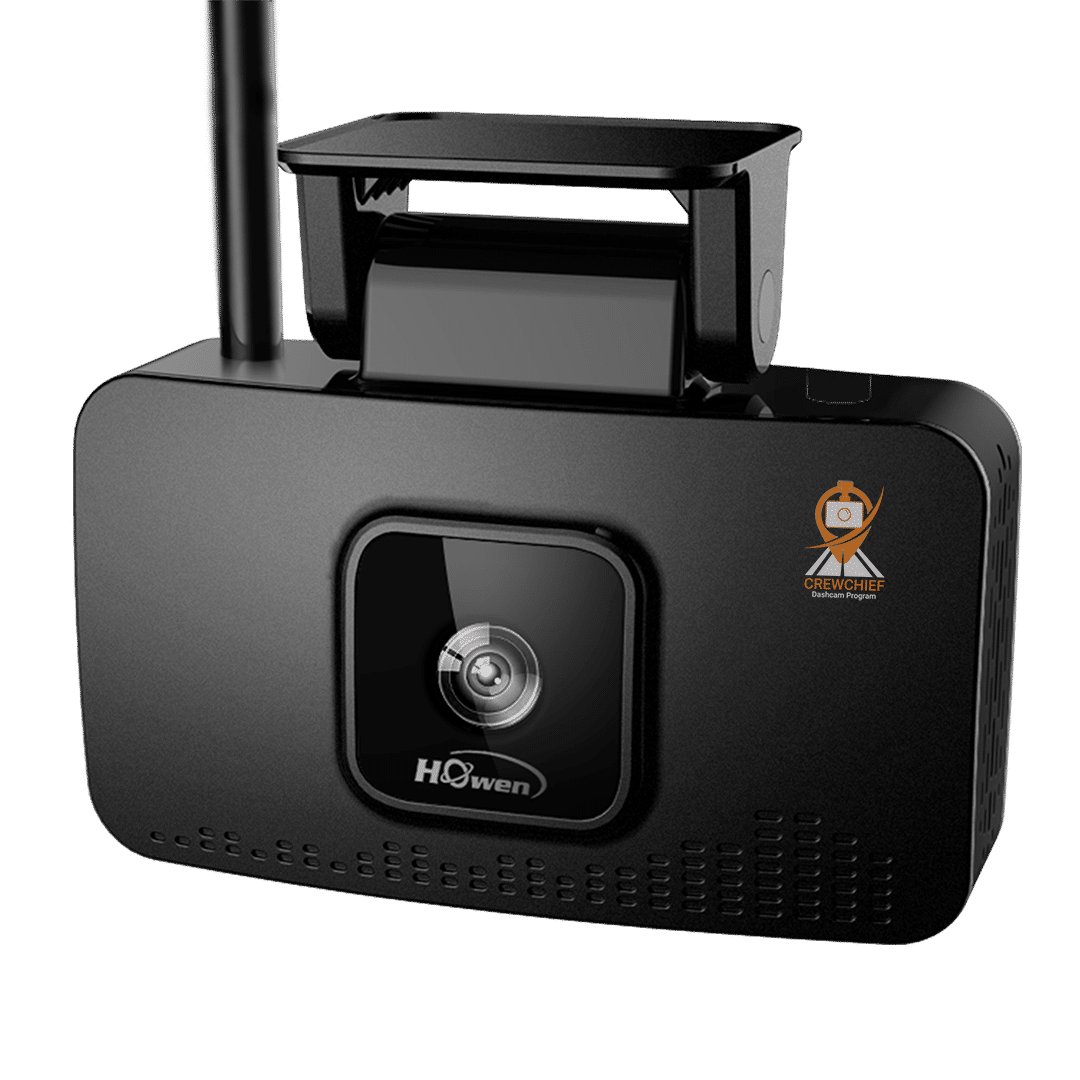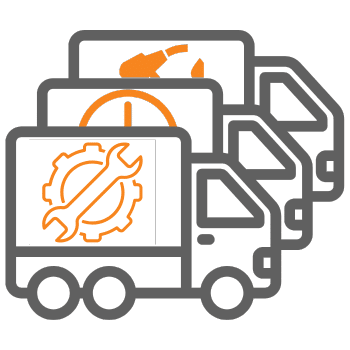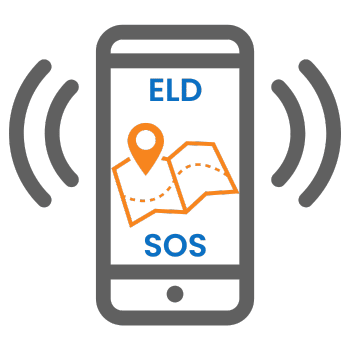Inside Track to an effective Telematics RFP
At Fleetistics, we believe that a well-crafted telematics RFP (request for proposal) is the compass that guides you toward the highest ROI.
The Fleetistics guide is designed to be your companion throughout the entire journey, ensuring each phase receives the attention it deserves.
Don’t just request proposals, drive information and innovation.
Phase 1: Getting Oriented
Embark on your Request for Proposal journey by gaining a deep understanding of your organization’s needs. Identify pain points, assess current challenges, and define your objectives. Our guide assists you in laying the foundation for a successful telematics RFP that aligns seamlessly with your unique requirements.
Learn more on Deploying Telematics

Submit Form or call 855.300.0527
- Understanding the Industry
- You Don't Know What You Don't Know
- Understanding Communication Components
- Data Visualization
- Log Rates
- Other Terms to Know
Terminology and definitions can be the most difficult aspect of writing a fleet tracking or telematics RFP. It is also essential to ensure your request generates responses based on your company’s actual needs, rather than the vendor’s perception of your needs and wants. An example of a commonly misunderstood term is real-time tracking.
There are many devices on the market, with a large variance in the definition of this term. Does this mean 1-second updates or 1-minute updates? Does it simply mean any technology that enables a user to see a vehicle location remotely?
Explaining the scope of information will clarify your needs. There are many industry terms that offer a wide range of potential solutions and options. For example, “engine diagnostics” may be defined as reading fault codes from vehicle computers, but there are many options for levels of data available. While writing an RFP, you should define the exact data your company is trying to acquire by requiring engine diagnostics.
Simply requesting engine diagnostics is inadequate because any company offering basic mass airflow or fuel tank level data will have met the requirement you defined. However, some GPS tracking systems, like the Geotab system, will provide all the available fault codes and status codes instead of just a few basic variables.
If you are not familiar with the technology, you have to get educated. You know the issues you want to resolve, now it’s time to learn about the technology and services to address them. The best way to do this is through online presentations.
Schedule presentations from different companies. Give the GPS Tracking Committee the chance to learn and continue answering deeper questions to seek to understand. This will establish a foundation of knowledge from which to work. At this point, you are not attempting to choose a vendor, but rather to gather information to define goals and required, preferred, and optional features.
In some scenarios, fleet operators have experience with GPS tracking, telematics, and/or engine diagnostics. While this knowledge makes the first phase much easier, you should still get presentations from several potential vendors because technology is constantly evolving. One new feature can have an exponential impact on your ROI from GPS tracking devices.
The GPS satellites orbiting the earth are transmitting radio waves, similar to that of an FM radio station. GPS satellites only transmit; they do not receive. The GPS radio waves are picked up by the receiver on your navigation system, phone, or any GPS antenna. We all share the same GPS satellites, so there very few points of differentiation here. There are various GPS chipsets that might perform better than others but in the vehicle tracking industry, most are about equal. GPS signals can be blocked by heavy or dense materials. A parking garage, tall buildings (canyon effect), or a pine tree forest may block some GPS signals. Under 99% of normal conditions, GPS signals are readily available. GPS signals are processed by the GPS tracker and then transmitted to a server using a cellular or satellite communication network. Wi-Fi or Passive options are impractical and far less popular because they come with many issues.
Cellular.
GPS data is just data being moved on a carrier network, similar to a picture or email, but much smaller in size. Cellular networks are the most cost-effective method of communication, but there are areas with little or no coverage due to a lack of cell towers. GPS signals that are sent with telematics and engine diagnostics data significantly increase the amount of data being transmitted. The more data, the higher the cost. In high availability scenarios, customers may opt to add satellite modems for failover or go with satellite communication only.
Satellite Communication.
To communicate globally and in the most remote areas, the GPS data is sent back to communication satellites, instead of cellular towers. These are different than the GPS satellites. The cost of satellite communication is significantly higher, therefore the amount of data transmitted is reduced to make it cost-effective to use satellite communication. Most GPS trackers that use satellite communication only transmit every 1-30 minutes, or by exception. To put it in perspective, a call on a cellular network might cost $0.02 per minute on average, while a call on a satellite phone might cost $2.00 per minute.
Data Visualization
- Log rate – the rate at which GPS coordinates are captured. Every 1 scoond to several hours.
- Update rate – The rate at which the GPS position information is transmitted to the cellular network. The GPS device might log the data, bundle the data, and then transmit several data points at one time. Therefore, a 1-minute log rate may work with a 2-minute update rate.
- Map refresh rate – Data that is transmitted arrives at the server at different times. This requires the map to be refreshed periodically to display a more current location. Maps typically refresh every 20 second or less.
These variables should be different for vehicle tracking, asset tracking, equipment tracking, battery trackers, and other variants. The more data, the higher the track resolution, but also the higher the cost.
Ask yourself how much resolution do you need to accomplish your goals?
How much are you willing to pay to get it? What is the communication coverage footprint needed?
This forces you to find a balance.
- Time-based log rates. Time-based logging is just what it sounds like. It stores the GPS system’s location every X seconds. Today the standard is every 30-60 seconds for vehicle tracking using cellular communication networks.This type of logging is generally less accurate since the distance is most often measured as a straight line between log points. In a straight line, the accuracy is high on straight roads like a highway. In an urban environment with lots of turns, it is less accurate.
- Behavior-based log rates. This term refers to GPS logging based on what the vehicle does. Variables such as acceleration or deceleration, exceptions, or changes in direction, result in a log point. This significantly increases the quality of the data being provided to the end-user. When set to high sensitivity you can see every turn made and sometimes multiple log points as a vehicle comes to a complete stop at a light or railroad tracks.
- Heartbeat – A heartbeat refers to an update being transmitted when a vehicle or asset is not in motion or running. Most GPS devices have this feature to confirm the location of an asset such as a cargo container that otherwise might not move often. Vehicle tracking units also have this feature to confirm location, identify towing, theft and reduce the time to acquire the first position log when a vehicle starts moving.
- Engine Protocols – With the introduction of GPS trackers that can also read engine diagnostics, it is important to know how your vehicles are used and to specify the quantity and type of protocol in your fleet. If you can provide a VIN list most companies that service these types of GPS trackers can look up the protocol for each vehicle.OBD trackers will likely require an adapter cable if not a totally different GPS device to work on different types of protocols. The Geotab GPS device uses an adaptor harness so the same device can be used for all protocols.
- OBD is the acronym for On Board Diagnostics often referred to as OBDII. It is an automotive term referring to a vehicle’s self-diagnostic and reporting capability. OBD systems give the vehicle owner or repair technician access to the status of the various vehicle subsystems. The amount of diagnostic information available via OBD has varied widely since its introduction in the early 1980s versions of on-board vehicle computers. Early versions of OBD would simply illuminate a malfunction indicator light or “idiot light” if a problem was detected but would not provide any information as to the nature of the problem. Modern OBD implementations use a standardized digital communications port to provide real-time data in addition to a standardized series of diagnostic trouble codes, or DTCs, which allow one to rapidly identify and remedy malfunctions within the vehicle. Wikipedia
- J-Bus
- J1708 – SAE J1708 is a standard used for serial communications between ECUs on a heavy-duty vehicle and also between a computer and the vehicle. Wikipedia
- J1939 – J1939 is the vehicle bus recommended practice used for communication and diagnostics among vehicle components. Originating in the car and heavy-duty truck industry in the United States, it is now widely used in other parts of the world. Wikipedia
Phase 1: PRO TIP
Top 3 – “Must Have” Features
Customers often publish Request for Proposal requirements that list pages of features they “must have”. Unfortunately, this often results in a waste of everyone’s time and no decision being made.
The best approach is to narrow the project focus to the core reason for making the investment; the 3 things that will provide you the needed ROI to go forward. If a GPS vendor cannot provide any of the top 3 features, they are immediately eliminated. Getting to the top 3 also forces an organization into a realistic planning process and ultimately pulls the project together.
Top 10 – “Like to Have” Features
Phase 2: Writing the Vehicle Tracking RFP and Selection
Crafting an effective Request for Proposal requires more than mere words. Dive into the intricacies of writing a compelling RFP that not only communicates your needs but also sets clear expectations. Fleetistics provides insights into avoiding common pitfalls, ensuring your RFP attracts responses that are on point and solution-oriented.
Once you feel you have phase 1 complete issue an RFI. This is like your test run to see what questions you receive and the potential solutions to your issues. The response to an RFI might be low, so keep it simple and minimize the legalese so more vendors are likely to respond. Vendors know there is no money tied to an RFI so response rates will be low and less robust. As a vendor, we do not want to provide a research paper when a customer has not done their basic due diligence.
Develop a timeline to start and complete the process. The timeline has to be based on the steps of the project, which then indicates the time, personnel, and money needed. Flying by the seat of your pants will lead to a lower ROI and a higher risk of failure.
Based on the anticipated timeline and KPIs, secure a budget and plan for a system evaluation. If you get it for free, you may just get what you pay for. Willingness to invest in the evaluation helps ensure you get the attention and results desired. A great solution evaluation can save you both time and money. You will avoid investing in inappropriate technology and are more likely to achieve your very best ROI.
There is a justified expectation that at the end of an extended evaluation process, the client will make an investment with the selected partner. GPS companies are not doing this work for charity, they are making a large investment in the education, demonstration, and training if done for free or for a minimal investment. Respecting the partner’s time and business relationship will improve the level of service and ROI you will receive.
This step is very important. The less you include and require, the more you will get in return. Where you need to be specific and clear is the requirements section. What are the features you must have? What are the features you would like to have? Include a definition section so there is less ambiguity. What makes sense to your team, might be different from the vehicle tracking company because of different experiences or terminology.
Pick a file format, such as Microsoft Word, that allows information to be added inline. Locking down a document or offering very limited space means you may not get critical information or it becomes very hard to follow along between several documents. With Word, you ask a question and the response is inserted directly below it. Because it is efficient, more fleet management companies are likely to respond. Make it difficult, and you will receive fewer responses.
Go easy on the legal requirements. When a company says a vendor must defend the company, employees, and officers against all of X, it creates an unreasonable and unbalanced relationship. If a 100 vehicle fleet says the vendor must have $5 million in GL insurance, the cost of the insurance exceeds the profitability of the account or it is simply billed back to the customer. Think about fostering a win-win relationship that provides an acceptable level of risk based on the technology.
Things to consider putting in the RFP
- Warranty and failure rate
- GPS log rate – resolution
- Update rate – frequency of transmission of data
- Telematics
- Engine diagnostics
- ELD – FMCSA
- Integration – paid or free API and SDK
- Installation requirements – BIG consideration in initial cost and cost of ownership
- Financing and taxes
- Users needed
- Training methods available
- Support methods available
- Implementation process
- Financial stability
- Company history and legal issues
- Reporting capabilities
- Samples of reports, maps, and functions
These things can be added without making the RFP extremely difficult or time-consuming. List the “must-have” features at the top so if they are not met you can stop reading the rest of the response. Vendors will also not spend hours responding only to catch they are not qualified on the last line item.
Some fleet operators will send a short survey to potential bidders to screen them before sending them the RFP details. This step is a good idea to be sure you are only inviting those with a higher probability of solving your issues. Don’t worry about the price yet, get the right solution providers responding.
If the GPS tracking requirements are fairly basic almost any company in the vehicle tracking space is a potential vendor so a survey is not needed. Do an online search for several keywords and make a list of those to receive the RFP.
Keywords include:
- Fleetistics
- GPS tracking
- vehicle tracking
- fleet tracking
- fleet management
- telematics
- equipment tracking
After sending the RFP to the vendor list, get confirmation of receipt expressing interest. This way you know if enough vendors received it and you can potentially ask some why they were not interested in responding.
Plan for Q&A sessions with the responding vendors well ahead of your final due date. This is an important part of the process to address confusion or point out things potentially missed in the RFP. Some fleet operators will have two Q&A sessions but most only have one. Document and publish the questions and answers for everyone to review. Again, the goal is to eliminate those not qualified and to improve the quality of the responses.
Phase 2: PRO TIP
It is important to involve a committee when possible. In medium to large organizations this is practical, but not always for smaller entities. Committees should represent many, if not all, areas of a company. GPS tracking data touches many areas other than fleet and getting everyone’s buy in helps improve the ROI. GPS data can benefit risk, safety, legal, HR, fleet, admin, payroll, delivery, IT, training, communications, marketing and service.
One of the biggest mistakes customers make is taking one feature from this company, one from another and one from yet another and make them all must have features or the vendor is disqualified. Unfortunately when this is done the customer loses as there may not be a products that incorporates all of the must haves in the manner you present them. Vendors that may be otherwise a great fit or approach a specific feature in an alternate manner are excluded. That reduces competition and drives up the prices. Customers have to be very selective in what is listed a must have feature. There should be just a few must have features and a lot more like to have features. These should then be put into a scorecard for evaluation.
Human Resources
As with any technology, it is only as good as the people using it. Before going further your company needs to decide on the HR policies it is willing to implement and enforce. This is a critical step and commitment. If there are no consequences for tampering or not utilizing the data, the ROI will be significantly reduced. We have seen companies squander 1.5 million dollar investments in GPS tracking technology because they were not willing to hold their employees accountable. The data was misused or neglected to the point that the expected ROI was sacrificed and upper management deemed the system a failure.
The HR policies need to be in place for the drivers as well as the leadership. This means the managers need to be held accountable for enforcing the policies. Some of the most successful companies wrote their managers up if they did not enforce the policies with their drivers. This level of accountability sends a clear message that the company is committed to the technology and the data.
Consultants
To help address this, require the consultant not receive financial gain from third parties involved in this process. This does not mean you cannot hire a consultant from a fleet tracking company but the evaluation needs to be across multiple technologies, not just theirs, and educational in nature. Avoiding specific product demonstrations at this stage ensures a more honest and unbiased educational experience. Working with consultants that have experience with multiple GPS systems will provide a broader understanding of the options.
Education
Technology Experts
There are many technologies that are designed to be integrated with the base GPS tracking solution. Custom integrations may also be considered. Understanding these integrations helps a customer think about what is needed today and what is possible in the future. Visit to view some of the types of companies that integrate with our GPS tracking technology.
Phase 3: Selecting a Fleet Management Partner
Choosing the right Fleet Management partner is a critical decision. Fleetistics helps you navigate through the sea of options by providing a comprehensive guide to evaluating proposals. Learn the art of distinguishing between offerings, identifying potential partners, and ensuring a synergistic relationship that maximizes your investment.
If you have followed the steps thus far, this step will be easy. Many successful fleet operators create a scorecard used by the committee to grade the Request for Proposal response. This reduces the ambiguity in the selection process. Weight the requirements so the most important carry a higher score than features you would like to have for convenience. Once done, list the fleet management companies in order of their score and determine how many you want to move forward with into the presentation phase. The number might range from 3 to 7 depending on the size of the fleet and the score of the requirements.
Now it is time to schedule presentations. If your fleet is large enough, having the vendor come onsite to discuss and present their fleet management solution is the next step. As a courtesy, try to schedule at least 3 weeks in advance to allow vendors to book flights at more reasonable rates than last minute bookings.
At this point, you are working to really get to know the companies, people, and solutions. A minimum of two hours should be allocated for each meeting with breaks in between. Again, a scoring mechanism should be utilized to structure the process. People will get tired and not be able to remember the first presentation although it may be the best GPS solution with the highest ROI.
Don’t be afraid of PowerPoint presentations but ask to see the user interface live at some point. Be sure to have a reliable high speed network connection available for the presenter. You want to see how the site looks and responds and the presenter can show you how their sytem will funtionally address some of your top issues.
The term used in the industry to test a system before buying is called a pilot. There are free pilots and paid pilots. Paid pilots are best when you want a larger sample group for a longer period of time. Pressuring a vendor to do long and large free pilots will not give you the results you want. If you need a longer pilot with more vehicles be willing to invest. A well managed free pilot with a smaller number of vehicles can also effective. Revenue received must be balanced against your vendor’s time and financial investment to get the actionable and reliable results you are looking for.
Pilots generally last between 1 week and 60 days. 1 week is for a smaller fleet with simple requirements. A 60-day pilot is much more involved and is more of a study than a review of the user interface. Fleetistics offers a 60-day process called a SEP or solution evaluation process. Click here to read about our enterprise fleet evaluation process that takes the guesswork out of selecting a fleet management system.
Phase 3: PRO TIP
Conduct a Solution Evaluation Process
A SEP is a structured process which takes place over 60-90 days. It is designed to demonstrate solutions to identified issues and uncover new opportunities for ROI. This process is involved but essential when making a million-dollar, long-term investment.
Start Your Evaluation Today
Phase 4: Implementing a GPS Vehicle Tracking System
- What is the plan
- Build it into your business
- Human Resource Policies
- Management Meetings
- Incentive Programs
By now, the GPS tracking team is very familiar with the GPS technology, the GPS vendor, the user interface, and data, but the end-users are not. It is important to understand the end-user and their perspective. The vehicle tracking program is just one more “thing” a field manager has to deal with. They must deal with the installation coordination, disgruntled employees, and potentially the highlighting of inefficiencies in how they manage their fleet. If you were in their shoes, how would you want a new program handled?
As with most things, lack of information leads to fear and resentment. Demonstrating the ROI from the evaluation process enables the concept to be “sold” to the internal users. Showing operations managers how the GPS vehicle tracking data can help them reach their bonus goals will ensure more internal support for the program. Take your time and introduce the fleet management system to all levels of management from the top to the bottom. Customize each presentation to maximize the time and attention span of your audience.
If you don’t measure it, and talk about it, no one else with either. We have all been in this position at one time or another. In the field of fast-paced industries, we naturally focus on the hot issues of the moment. To prevent the GPS tracking program from slowly fading away, you need to make it part of the routine business.
You want to talk about fleet efficiency like you talk about expenses, customer cancellations, and inventory. If upper management reviews miles driven per stop, rolling cost per mile, stops per day and other data provided by the fleet management system, it will compel everyone to use the system to get the data.
As with any process or policy, human resources must be involved. HR can help frame the program, control how the data can be used, and outline the consequences that can be implemented based on what is learned from the data. A key element to this is a focus on consequences for managers who fail to take action on the data.
A top-down accountability approach has proven to be the most successful. Also, if the company leadership is held accountable like the drivers, the drivers cannot complain they are being treated any differently. Leadership by example is a powerful management tool. There have been many instances where the managers are the ones acting outside of company policy and need to be held accountable.
Most companies make a significant investment in their GPS fleet management system. Most of this investment is in time, salary, and taking the focus away from the core business. To maximize the return on investment it is important to make the data part of regular management meetings. By automating reports you can ensure everyone is reviewing the same data with the least about of effort and time.
Consider this. If the data is not important enough to discuss on a regular basis, is it worth the investment? By the time you get to this point, the ROI should be known, so adding GPS data to the management meeting agenda is just an admin process.
A positive way to keep the ROI coming is to make it fun; the new term is gamification. Companies like Predictive Coach have made gamification a business. By making the data analysis fun and competitive you can focus on the positive aspects. This is commonly done with reports that enable driver scoring and ranking.
Posting the driver scorecard to the break room each week is a great way to apply indirect pressure to the underachievers. The top performers in specific areas of interest to the company should receive positive reinforcement. Giving away a gift card to Starbucks is literally like giving someone gold.
Phase 5: GPS Installation Project Management
The installation process is one of the most expensive and time-consuming aspects of deploying a fleet management system. Installation often costs more than the GPS device and takes significantly more time to coordinate when dealing with an enterprise-class fleet. A project manager is appropriate and cost effective for the deployment of several hundred GPS trackers or more.
To a GPS installation company, time is money. If they are standing around on your job site not working when they could be working on another, it affects their efficiency. It is crucial to understand this when working with installation companies.
Additionally, if a truck is off the road, it is not generating any revenue for you. While some customers choose self-installation, they may not realize the benefits of hiring a professional installer. Investing a few thousand dollars in professional installation is more cost-effective than delaying your ROI by a month or having the work done by an employee, which could take three times as long. Professional installers have extensive experience, installing thousands of GPS devices and dashcams each year, and can complete the job quickly and accurately. They are often available to work at night and on weekends to ensure minimal disruption to your fleet operations and continuous revenue generation. Check out VehicleInstallers.com for someone near you.
A good GPS installation partner is a long-term relationship. Given that your fleet will likely have a turnover rate of about 20% per year, it becomes essential to uninstall and reinstall GPS devices in new vehicles. This task is best handled by GPS installers rather than relying on local managers who may overlook critical aspects. Even seemingly simple factors like the orientation of the GPS unit can significantly impact the accuracy of the GPS log data. Properly securing the GPS tracking device to the truck’s frame is vital to avoid excessive accelerometer data and inaccurate information.
It is important to acknowledge your limitations and focus on what you excel at. If you have conducted thorough research and have a clear understanding of your return on investment (ROI), securing funding for the installation process becomes more manageable and likely to be approved.
Foster a good working relationship with your installer for efficient GPS installation services and enjoy a long-lasting partnership.
You will want to create a timeline for installation. Some installers will do the project management and others will work your schedule. A timeline controls the process and gives everyone time to prepare for their installation day. A conference call with the managers scheduled for the following week is a good idea to explain the plan and requirements. Managers can also ask questions and be clear about this being a company initiative that they are required to participate in.
Benefits of an effective request for proposal
Maximized Responses, Minimized Ambiguity
An effective RFP serves as a beacon, attracting a higher quantity and quality of responses. By clearly articulating your requirements and expectations, you reduce ambiguity and ensure that potential partners respond with precision, providing solutions tailored to your fleet management needs.
Clarity in Communication
Clear and concise RFPs foster better communication between your organization and potential fleet management partners. This clarity extends throughout the selection process, enabling a mutual understanding of goals, expectations, and deliverables. This transparency sets the stage for a successful partnership.
Cost-Efficient Solutions
A well-structured RFP enables vendors to provide accurate and targeted proposals. This, in turn, facilitates the identification of cost-efficient solutions that align with your budget constraints. By eliminating ambiguity and providing vendors with a clear roadmap, you create an environment where cost-effectiveness is prioritized.
Long-Term ROI
Perhaps the most significant benefit is the long-term return on investment (ROI). An effective RFP lays the groundwork for a successful fleet management partnership, setting the stage for enhanced operational efficiency, improved asset utilization, and overall cost savings. The initial investment in crafting a robust RFP pays off manifold in the form of sustained ROI over the life of the fleet management solution.
Do Not Forget Dashcams
Most fleets are investing in dashcams for the liability benefits. It is far easier to test GPS tracking, telematics, and dashcams at the same time. Repeating the entire evaluation process will be a strain on any organization.

Learn more about fleet dashcams before launching the evaluation process.






